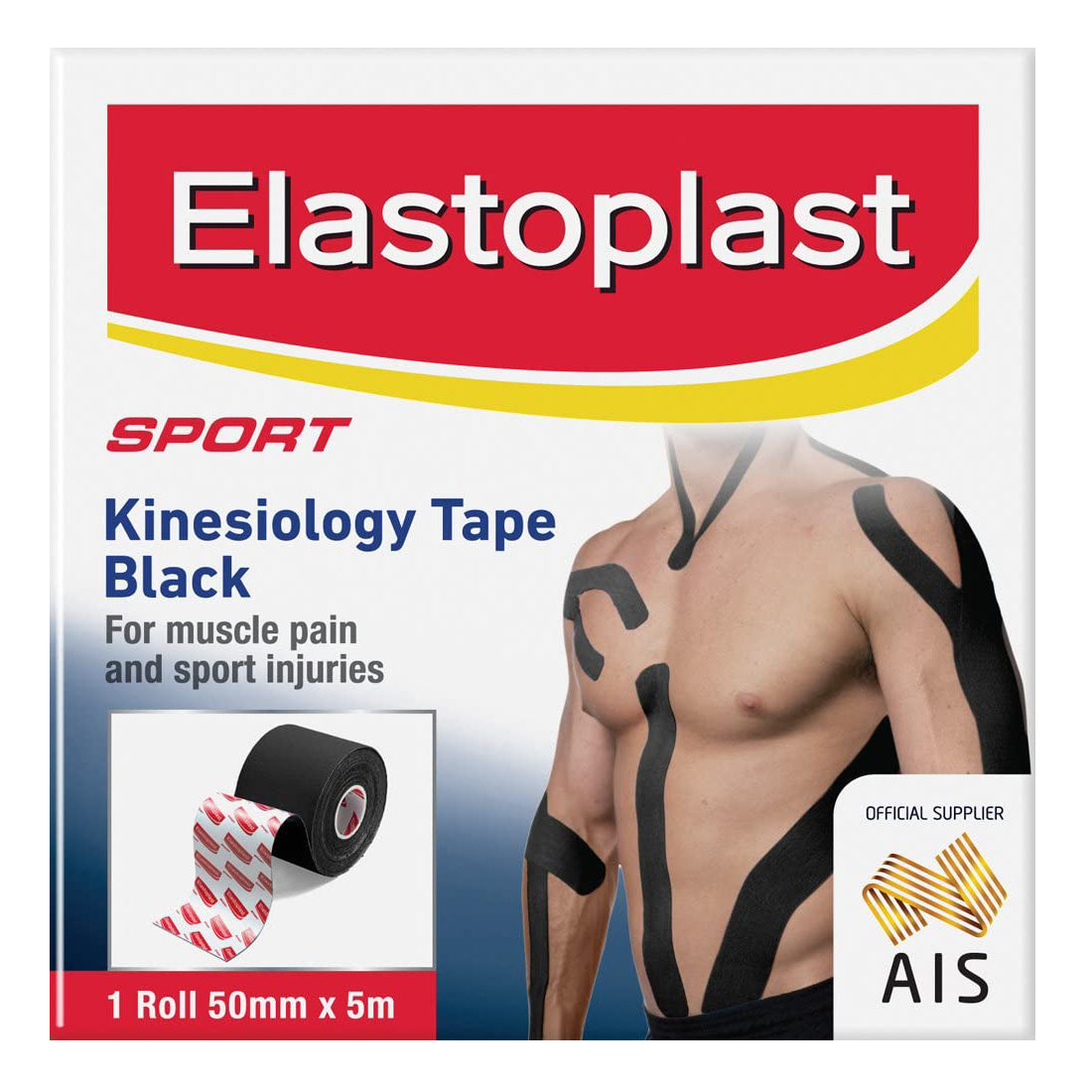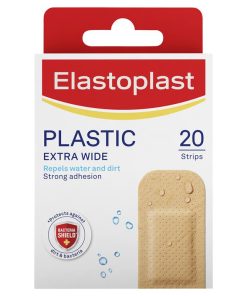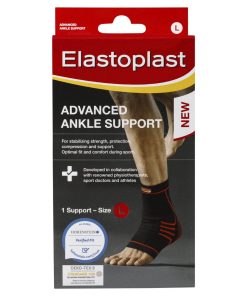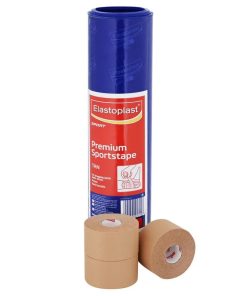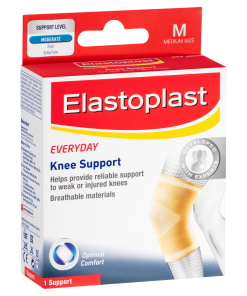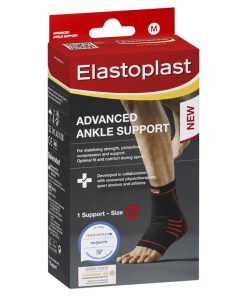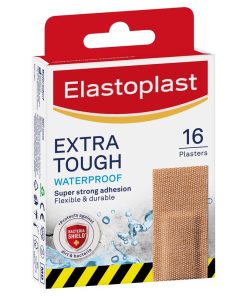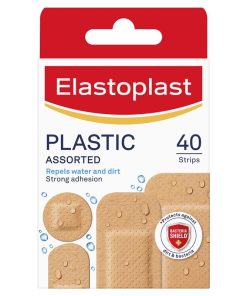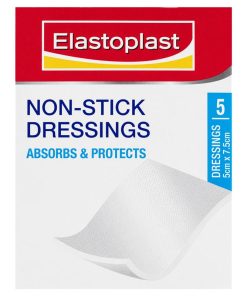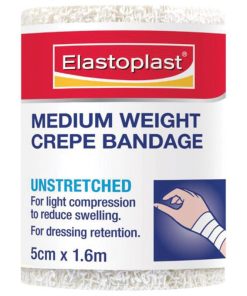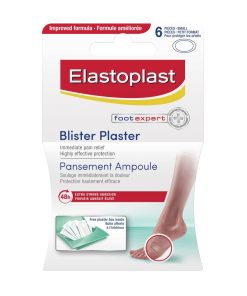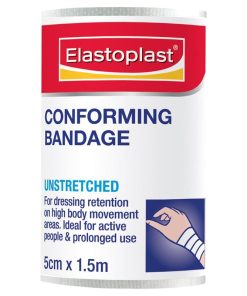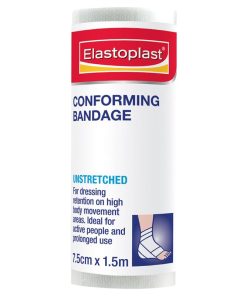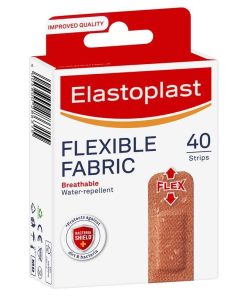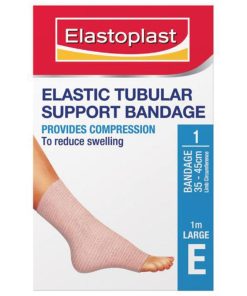Elastoplast Sport Kinesiology Tape Black 1 Pack Elastoplast
$ 15,95 $ 9,57
Elastoplast Sport Kinesiology Tape is designed to provide comfort, increase stability and relieve pain in any injured joint or muscle area. Its elastic properties make it different from regular strapping tape – kinesiology tape allows full motion of your body parts, providing dynamic support that can be worn for an extended period of time.
Working like a second skin, Elastoplast Kinesiology Tape improves blood flow and speeds up recovery from minor injuries. Its porous, thin construction is suitable for those with sensitive skin types. The lined backing paper also allows for easy removal after application.
FEATURES & BENEFITS
- Swelling reduction
- Reduced muscle fatigue
- Muscle support
- Reduced downtime from injury
- Instructional usage leaflet in every pack
- Rehabilitates injured muscles
- Lowers swelling
- Relieves pain
Find an instructional “how to use” leaflet with common applications inside every pack of Elastoplast Kinesiology Tape.
Common areas of application are shoulders, backs, arms, hamstring & calf muscle groups.
DIRECTION
How does kinesiology tape work?
Correctly applied kinesiology tape lifts the skin to create a small amount of space between the muscle and dermis layers of the body. This space makes room for drainage and blood flow while taking the pressure off any swelling.
How do I apply kinesiology tape on my ankle?
- Make sure the area around your ankle joint is clean and dry. You’ll then need to measure out two pieces before application.
- Keeping the backing on, measure the first piece from your inner ankle, around the bottom of your heel, and up the other side to just above the outer ankle. Cut this piece and save it for later.
- Measure the second piece starting again from the inside of your ankle. This time, measure around the back of your heel and finish on the outer side of your foot.
- Remove adhesive backing and apply the tape to the measured areas – it needs to be firm, but not overly tight or loose.
If you’re unsure, check the instructions inside your Elastoplast Kinesiology Tape pack.

How do I use kinesiology tape for hamstring pain?
- Stand and gently lean forward onto a table-height surface. Keep your knees straight.
- Apply 1 piece of kinesiology tape to the middle of your upper hamstring area.
- Gently stretch the tape as you apply it down your outside hamstring muscle to end below your knee joint. It needs to be firm, but not overly tight or loose.
- Repeat with a second piece of tape down your inside hamstring muscle
If you’re unsure, check the instructions inside your Elastoplast Kinesiology Tape pack.
PACKAGING SIZE
| Code | Size | Quantity | Colour | Carton (Pieces) |
| 40571 | 50mm x 5m | 1 Roll | Assorted Colours | 32 |
| 48394 | 50mm x 5m | 1 Roll | Black | 48 |
| 48392 | 50mm x 5m | 1 Roll | Beige | 48 |
| 79007 | 50mm x 5m | 1 Roll | Camo Red | 24 |
WARNING
Wear during activities that lead to discomfort. Seek medical advice if in doubt about the injury. Only use on clean, intact skin. The product should be applied as illustrated. Ensure product is not uncomfortably tight and blood flow is not restricted. Avoid wearing for prolonged periods e.g. whilst sleeping. Do not use if you have a known allergy to any of the specified materials. Consult a physician and stop use if a rash develops, pain is prolonged or if conditions worsen.
FREQUENTLY ASKED QUESTIONS
Does kinesiology tape work for tendonitis, plantar fasciitis, arthritis?
Kinesiology tape is an effective method for relieving pain and improving range of movement when suffering from tendonitis, plantar fasciitis and arthritis. Studies1 have shown proper application of kinesiology tape provides quick and effective relief.
Can you the reuse Elastoplast Kinesiology Tape?
After being removed from the skin, Kinesiology tape loses much of its adhesive quality. Reusing kinesiology tape also presents hygiene problems, especially if being used during sport. For these reasons it is not recommended to reuse kinesiology tape.
Quick Shipping and Professional Packaging
We provide a variety of shipping options due to our long-running partnerships with UPS, FedEx and DHL. Our warehouse staff will package all goods to our exacting requirements. Your goods are thoroughly checked and secured properly prior to shipping. We ship to thousands clients each day across multiple countries. This shows that we're committed to being the largest online retailer in the world. Both Europe and the USA have distribution and warehouse centres.
Note: Orders that include more than one item will be assigned a processing date depending on the item.
Prior to shipment, we will inspect thoroughly the items you've purchased. The majority of orders are shipped within 48 hours. The expected delivery time will be between 3-7 days.
Returns
We don't control the inventory in our factory and warehouse. This means that the actual stock could change at any time. Be aware that your order may be out of stock when the order has been placed.
Our policy is valid for 30 days. If you have passed 30 days in the past since you purchased and we are unable to offer you a refund or exchange.
The item cannot be used and in its original condition. It must also still be in the original package.
Related products
Bandages, Gauze & Dressings
Elastoplast Crepe Bandage Heavy Weight 10cm x 2.3m Elastoplast
Bandages, Gauze & Dressings
Braces & Sleeves
Premium Rigid Strapping Tape Tan
Elastoplast Premium Rigid Strapping Tape Tan 3.8cm x 13.7m 8 Rolls Elastoplast
Supports & Braces
Braces & Sleeves
Braces & Sleeves
Bandages, Gauze & Dressings
Elastoplast Crepe Bandage Medium Weight 5cm x 1.6m Elastoplast
Bandages, Gauze & Dressings
Elastoplast – Aqua Protect Waterproof Adhesive Dressing 5cm x 7.2cm Elastoplast
Bandages, Gauze & Dressings
Blister Plaster
Medical Tape & Bandages
Elastoplast Medium Weight Crepe Bandage Unstretched 7.5cm x 1.6m Elastoplast
Bandages, Gauze & Dressings
Elastoplast Crepe Bandage Heavy Weight 5cm x 2.3m Elastoplast
Cushioning Tape
Bandages, Gauze & Dressings
Bandages, Gauze & Dressings
Elastoplast Conforming Bandage Unstretched 5cm x 1.5m Elastoplast
Bandages, Gauze & Dressings
Elastoplast Cohesive Compression Bandage 50mm x 4.5m Elastoplast
Medical Tape & Bandages
Elastoplast Rigid Strapping Tape 38mm x 13.7m – 30 Rolls Elastoplast
Bandages, Gauze & Dressings
Elastoplast Conforming Bandage Unstretched 7.5cm x 1.5m Elastoplast
Bandages, Gauze & Dressings
Bandages, Gauze & Dressings
Blister Plaster
